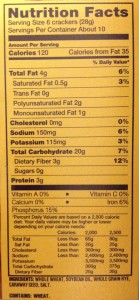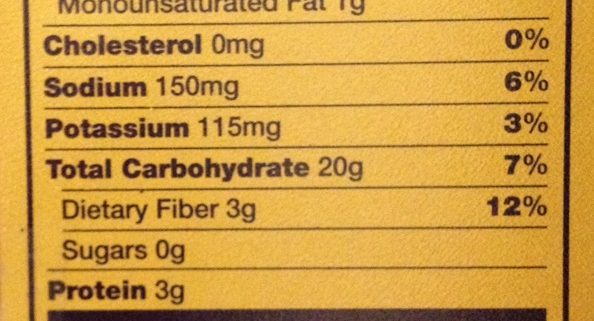Navigating Nutrition Labels
 When trying to manage or lose weight, you may have been told countless times to look at the nutrition facts label prior to purchasing or eating certain foods. While the nutrition label contains excellent information, it can seem confusing and overwhelming when you are unfamiliar with how to read it.
When trying to manage or lose weight, you may have been told countless times to look at the nutrition facts label prior to purchasing or eating certain foods. While the nutrition label contains excellent information, it can seem confusing and overwhelming when you are unfamiliar with how to read it.
The FDA requires nutrition facts labels to be on most prepared foods such as breads, cereals, canned and frozen foods, snacks, desserts, drinks, etc. Nutrition labels on raw produce such as fruits, vegetables and fish is voluntary. The nutrition label is geared to help consumers be aware of the types of foods they are purchasing so they can make better informed decisions for their health.
In this post I will address two of the most confusing and most helpful aspects of the nutrition label: serving size and percent daily value.
Serving size can be found near the top of the label. The serving sizes are standardized in familiar units such as cups, ounces or pieces. It is very important to notice this because the rest of the information on the label is based on serving size NOT the whole package. Packages can also be deceptive. Perhaps you buy a bag of chips that you would assume is a single serving. Take a look at the label and you may find there are actually two servings per bag, meaning all the information you see on the rest of the label needs to be doubled. The servings per container will show how many servings are in the entire package.
The %Daily Value listed on the right side of the label refers to the daily value for key nutrients listed, based on consuming 2,000 calories per day. Similar to serving size, it is important to note this piece of information because it may confuse you. For example if you see that the product contains 20% of your carbohydrate needs, that would be accurate only if you were someone consuming 2000 calories a day. While 2000 calories has been set as a standard, be aware of your own caloric needs, and how the %DV’s listed are affected. Even if you aren’t consuming 2000 calories a day, the %DV can help you to determine if the food is high or low in a nutrient. 5% DV or below is considered “low” and 20% DV or higher is considered “high.” Throughout the entire day the %DV for each nutrient should generally equal 100%.
Nutrition labels are an excellent tool to help you navigate the best products on the shelves. Now that you understand two important parts of the label, take a look at the products you normally purchase and let your newfound knowledge help guide your choices next time you go shopping!
What surprised you about the nutrition information on the products you normally purchased?


Leave a Reply
Want to join the discussion?Feel free to contribute!